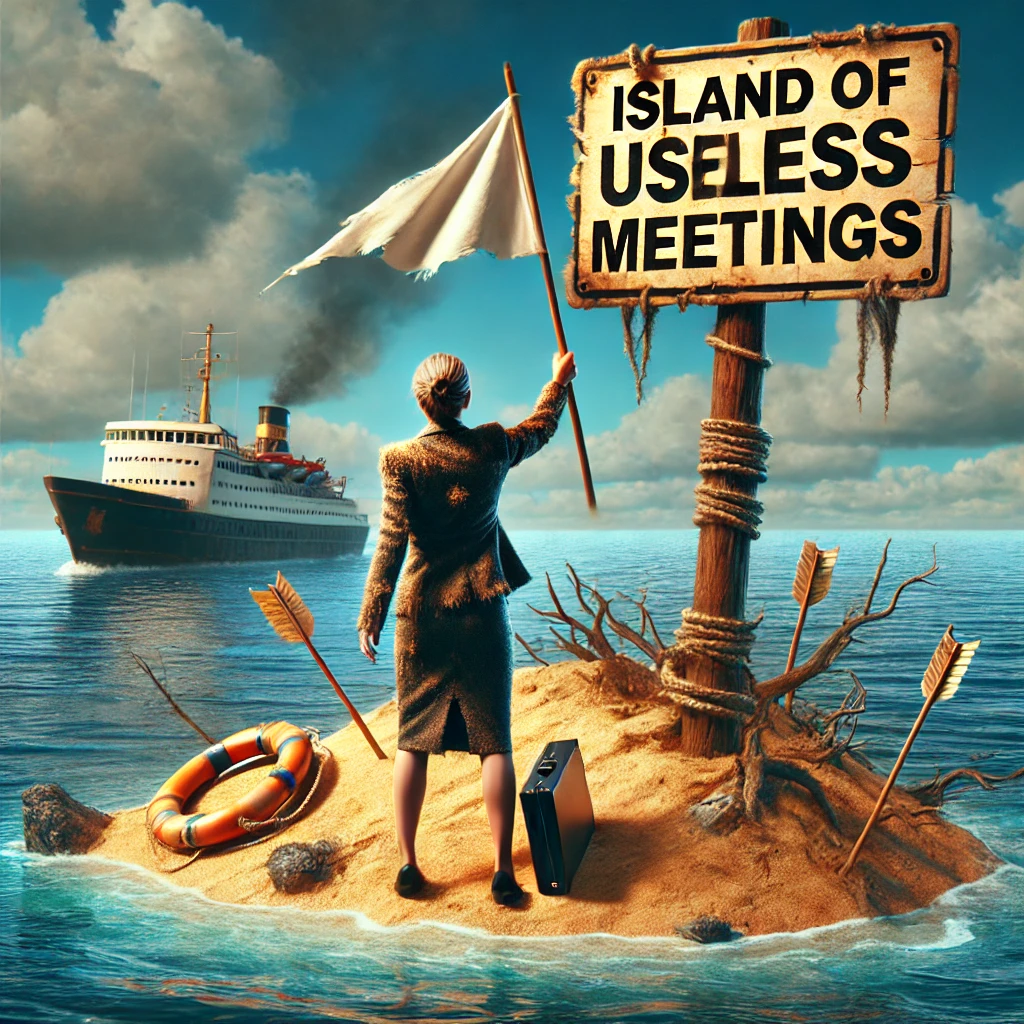by Rebecca Hodson
Nothing cleanses the soul like a good confession – here is mine. Sometimes, during virtual meetings, I start out with the noblest of intentions, armed with a notebook and a serious face, ready to engage deeply. But then, somewhere between the first PowerPoint slide and the inevitable awkward silence, I’m off. Suddenly, I’m answering emails, scrolling through texts, sending GIFs that I’m sure are hilarious, and, oh yes, shopping for sandals. Not just any sandals, mind you— sandals that, in some ineffable manner, promise to irrevocably alter the trajectory of my existence.

But here’s the thing: if I know there is a need for a meeting, that there are objectives to be met, and that I may even be put on the spot, I can stay on task. Imagine that. It turns out, the trick to keeping people like me from wandering off into the land of online retail therapy is, shockingly, a well-planned meeting.
And I’m not just preaching to those who lead meetings that I attend—this sermon is also directed at myself. Believe it or not, I’ve been guilty of stretching out a meeting and being unable to land the plane. Yes, I, too, have contributed to the endless cycle of drawn-out discussions and tangents that lead nowhere.
So here’s how I’ve learned to avoid that fate:
- Define the Purpose: Seriously, why are we here? If it’s to update, decide, brainstorm, or solve a problem, let’s make that crystal clear. No mystery novels, please.
- Create a Focused Agenda: Lay out what we’re talking about, give it a time slot, and prioritize. Think of it as a roadmap to avoiding a 90-minute detour into the Land of Lost Meetings.

- Invite the Right People: Only those who absolutely need to be there, like the cast of a well-curated reality show. And send them the agenda beforehand so they don’t show up like deer in headlights.
- Set the Meeting Length:

- 15 Minutes: Borrowed from Agile methodology, this is perfect for daily check-ins when working on a project with deadlines and a large team. The purpose? Quick status updates. Think of it as a meeting espresso—short, strong, and to the point.
- 30 Minutes: Just enough time to get things done before I start wondering if those sandals come in another color.
- 45 Minutes: For when we need to dig a bit deeper, but not so deep that we’re lost at sea.
- 60 Minutes: Save this for brainstorming sessions or complex issues where we need to let our ideas marinate like a zesty ceviche!
- Facilitate Effectively: Keep us on track, let everyone have their say, but don’t let it drag. Summarize the key points, hand out action items, and let us go on our merry way.
- Follow Up: Send out a recap so no one can claim they forgot what they were supposed to do. Trust me, I’ve tried that one.
Here’s the truth: a well-structured meeting with clear goals can hold anyone’s attention. And if it works for me—the person who once spent an entire meeting debating the merits of gladiator sandals amidst extraneous distractions—it can work for anyone.
So, let’s embrace the power of the well-planned, purpose-driven meeting. Who knows? You might even make it to the end without checking your inbox—or your shopping cart.
P.S. If you receive a meeting request and need more clarification don’t be afraid to ask for objectives or an agenda!





